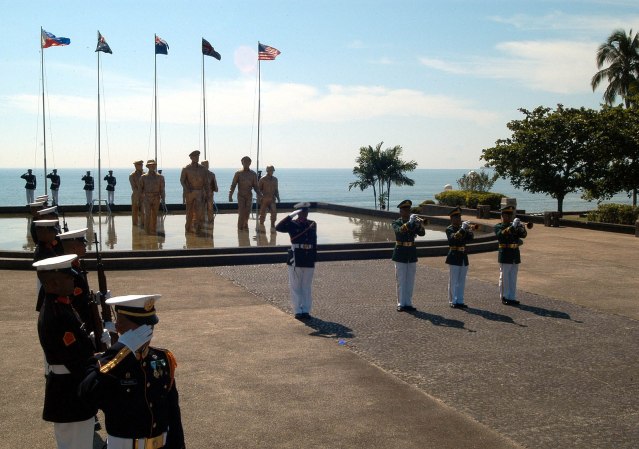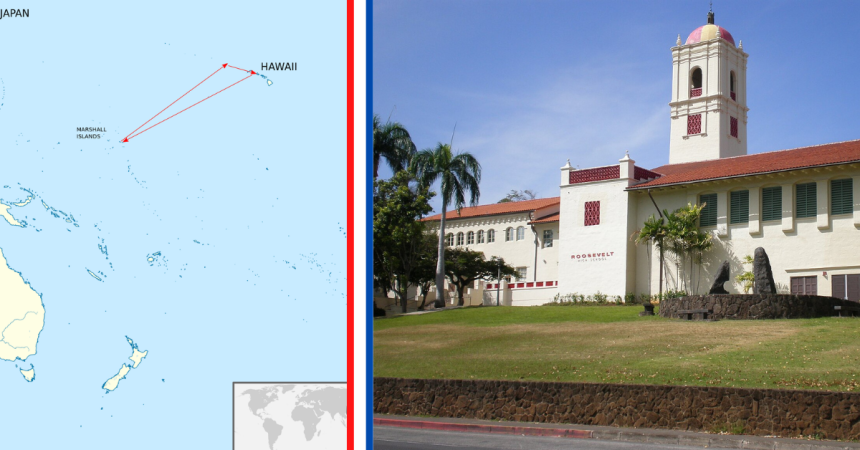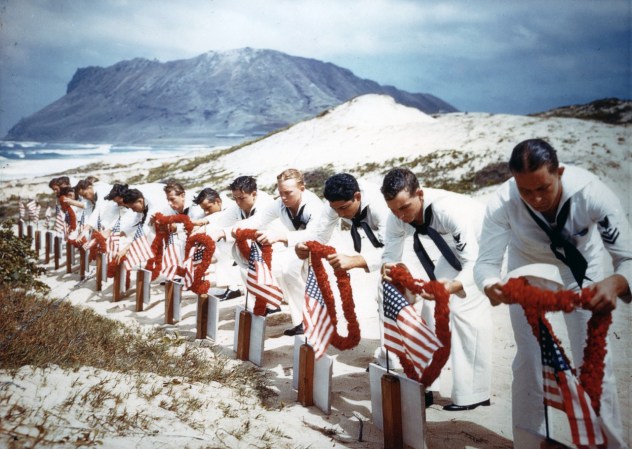Most Americans know the story of Pearl Harbor, how the Japanese planes descended from the clouds and attacked ship after ship in the harbor, hitting the floating fortresses of battleship row, damaging drydocks, and killing more than 2,300 Americans. But the most coveted targets of the attack were the aircraft carriers thankfully absent. Except one was supposed to be there that morning with a future fleet admiral on board, and they were both saved by a freak accident at sea.

Vice Adm. William Halsey, Jr., was a tough and direct man. And in November 1941, he was given a top-secret mission to ferry 12 Marine F4F Hellcats to Wake Island under the cover of an exercise. Wake Island is closer to Japan than Hawaii, and Washington didn’t want Japan to know the Marines were being reinforced.
The mission was vital, but also dangerous. Halsey knew that Japan was considering war with the U.S., and he knew that Japan had a long history of beginning conflicts with sneak attacks. He was so certain that a war with Japan was coming, that he ordered his task force split into two pieces. The slower ships, including his three battleships, were sent to conduct the naval exercise.
Halsey took the carrier Enterprise, three heavy cruisers, and nine destroyers as “Task Force 8” to deliver the planes. And those 13 ships would proceed “under war conditions,” according to Battle Order No. 1, signed by the Enterprise captain but ordered by Halsey.
All torpedoes were given warheads, planes were armed with their full combat load, and gunners were prepared for combat. Halsey had checked, and there were no plans for allied or merchant shipping in his path, so he ordered his planes to sink any ship sighted and down any plane.
If Task Force 8 ran into a group of ships, they would assume they were Japanese and start the war themselves. That’s not hyperbole, according to Halsey after the war:
Comdr. William H. Buracker, brought [the orders] to me and asked incredulously, “Admiral, did you authorize this thing?”
“Yes.”
“Do you realize that this means war?”
“Yes.”
Bill protested, “Goddammit, Admiral, you can’t start a private war of your own! Who’s going to take the responsibility?”
I replied, “I’ll take it! If anything gets in my way, we’ll shoot first and argue afterwards.”

Equipped, prepared, and looking for a war, Halsey and his men sailed until they got within range of Wake Island on December 4, dispatched the Marines, and then headed for home.
There is an interesting question here about whether it would have been better if Task Force 8 had met with the Japanese force at sea. It would surely have been eradicated, sending all 13 ships to the bottom, likely with all hands. But it would have warned Pearl of the attack, and might have sunk a Japanese ship or two before going down. And, the Japanese fleet was ordered to return home if intercepted or spotted before December 5.
But the worst case scenario would’ve been if Task Force 8 returned to Pearl on its scheduled date, December 6. The plan was to send most of the sailors and pilots ashore for leave or pass, giving Japan one of its prime carrier targets as well as additional cruisers to sink during the December 7 attack.
Luckily, a fluke accident occurred at sea. A destroyer had split a seam in rough seas, delaying the Task Force 8 arrival until, at best, 7:30 on December 7. A further delay during refueling pushed the timeline further right to noon.
Because of that single, slightly odd occurrence, 13 less ships, including one of America’s most valuable carriers, were present when the Japanese attack began. And the Japanese pilots were looking for the three carriers assigned to Pearl. As Imperial Japanese Navy Lt. Cmdr. Mitsuo Fuchida later described his arrival with the first wave:
I peered intently through my binoculars at the ships riding peacefully at anchor. One by one I counted them. Yes, the battleships were there all right, eight of them! But our last lingering hope of finding any carriers present was now gone. Not one was to be seen.

And the Enterprise would go on to fight viciously for the U.S. in the war. Halsey spent December 7-8 looking for a fight. While it couldn’t make contact in those early moments of the war, it would find earn 20 battle stars in the fighting. It was instrumental to the victories at Midway, the Naval Battle of Guadalcanal, the Philippine Sea, and Leyte Gulf.
It suffered numerous strikes, but always returned to the fight. Its crew earned the Presidential Unit Citation and the Navy Unit Commendation. The ship, and much of the crew, survived the war. But the Enterprise was decommissioned in 1947.
Two great articles, linked above, were instrumental in writing this article. But a hat tip also goes out to Walter R. Borneman whose book The Admirals inspired this piece.


























